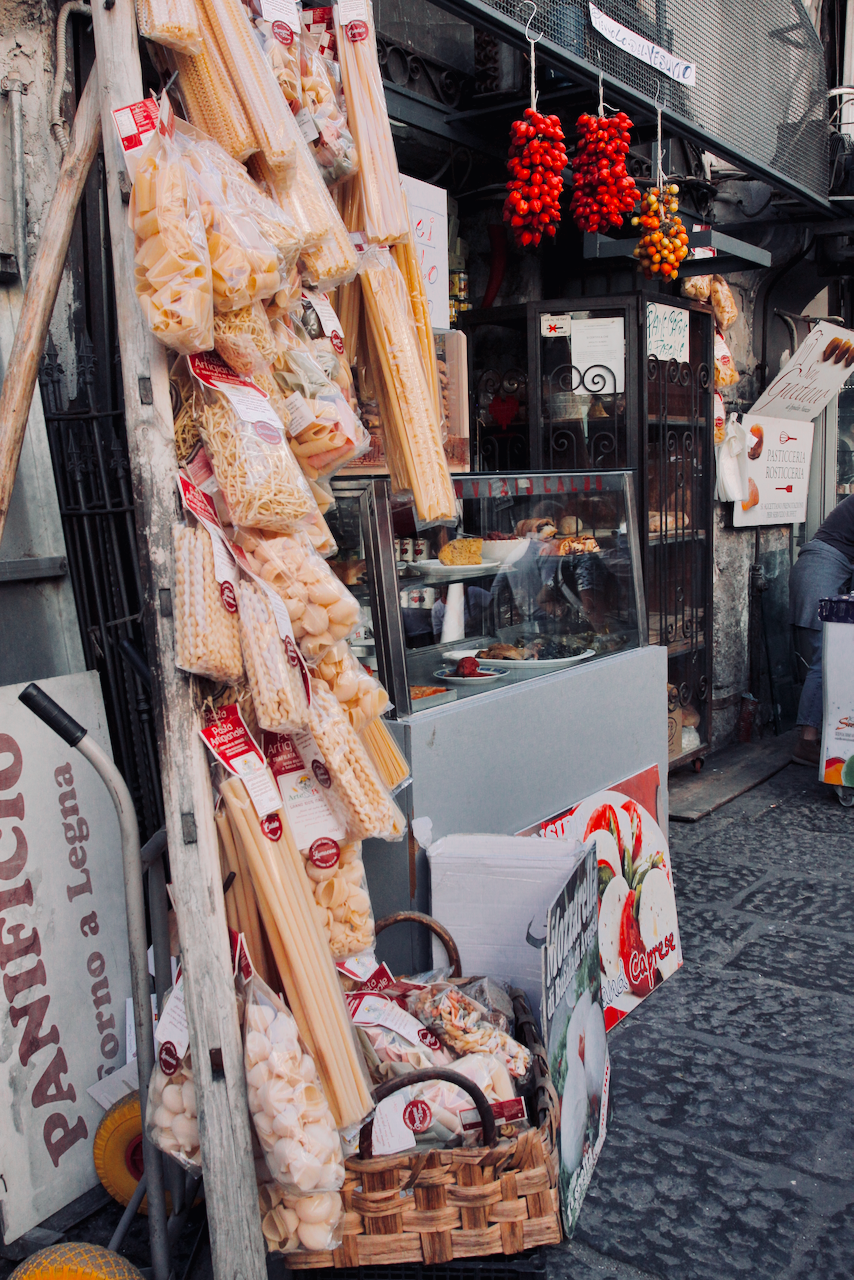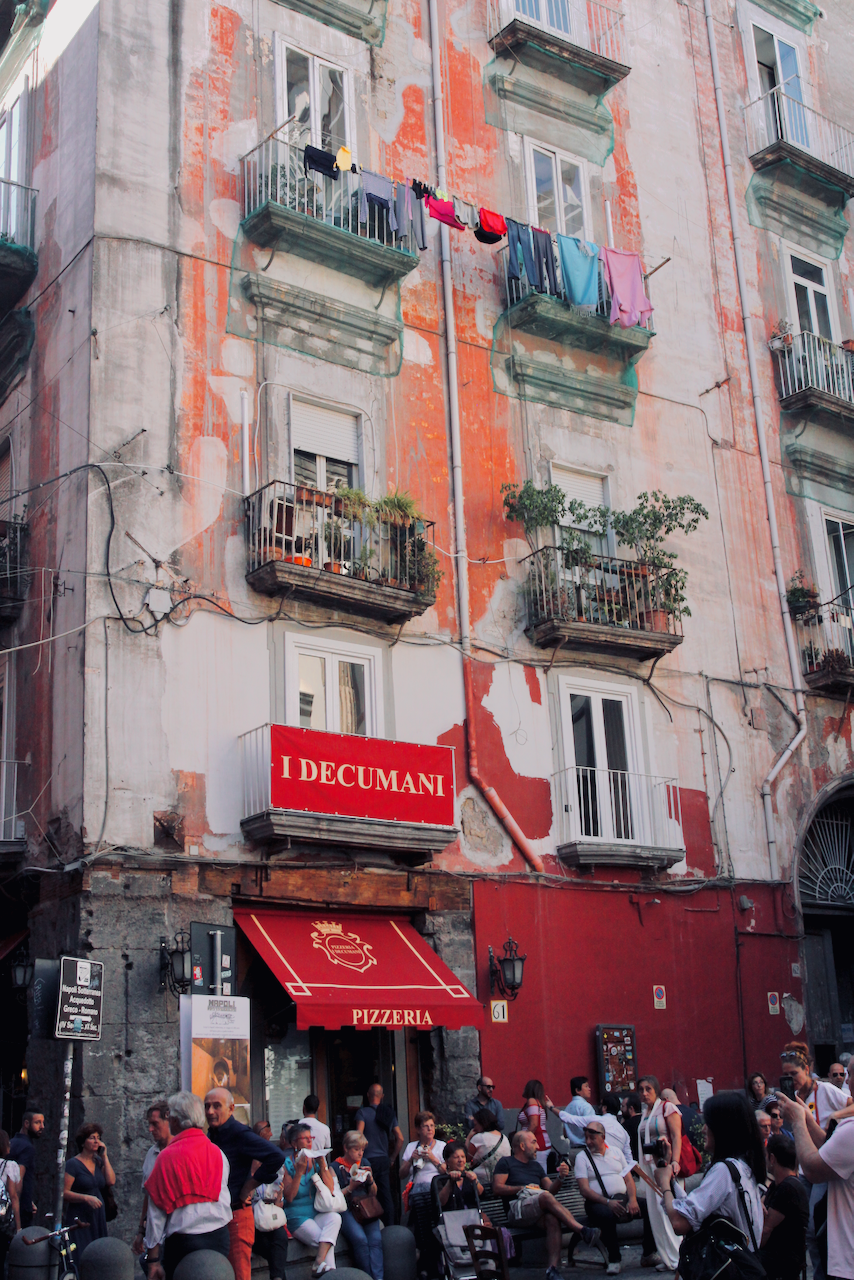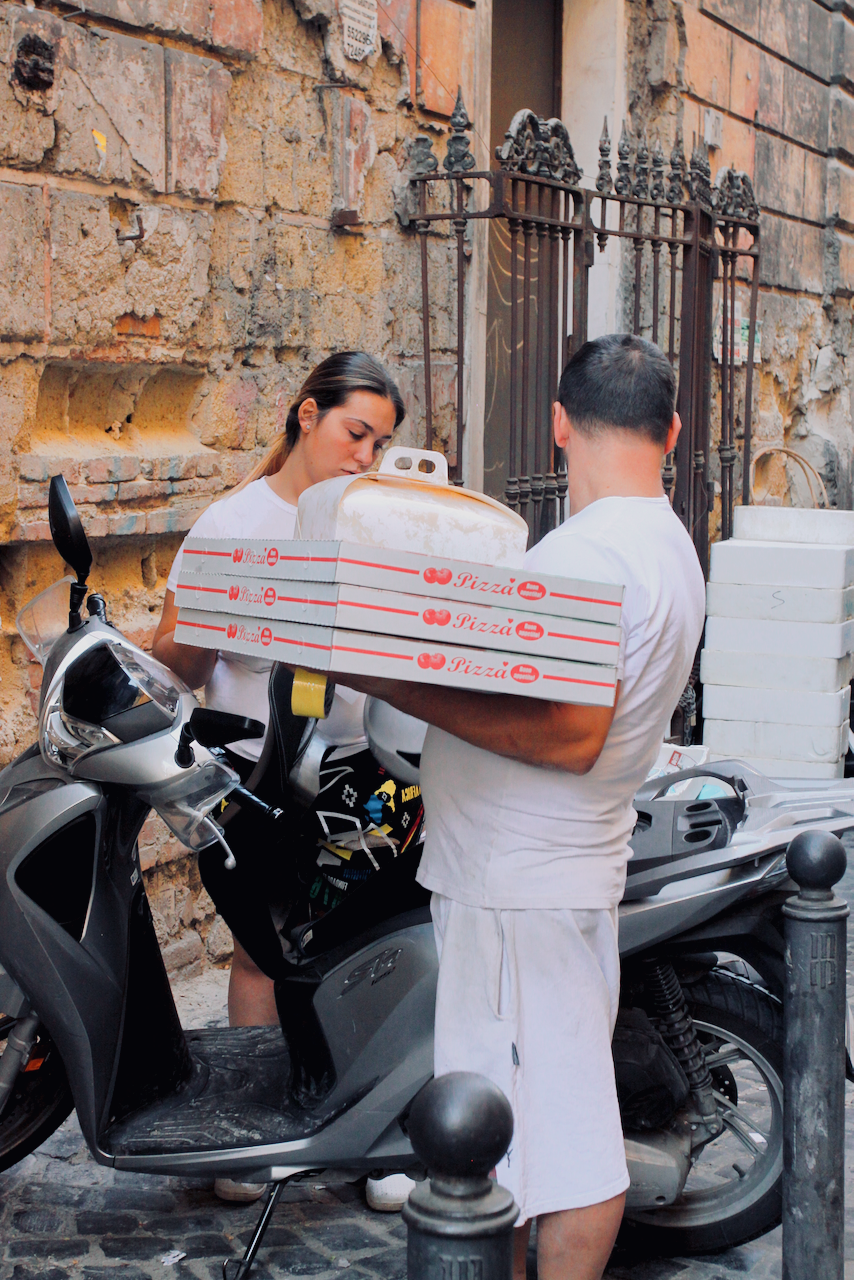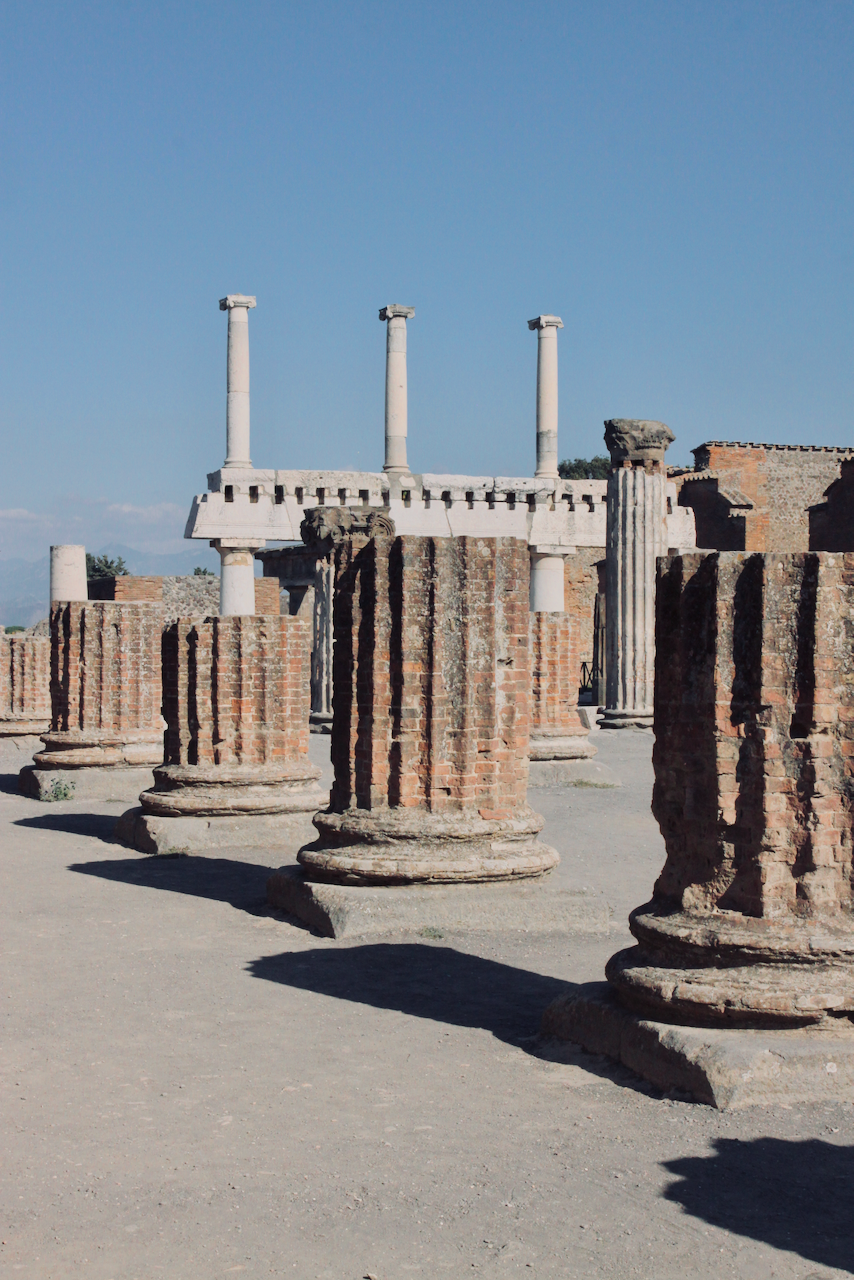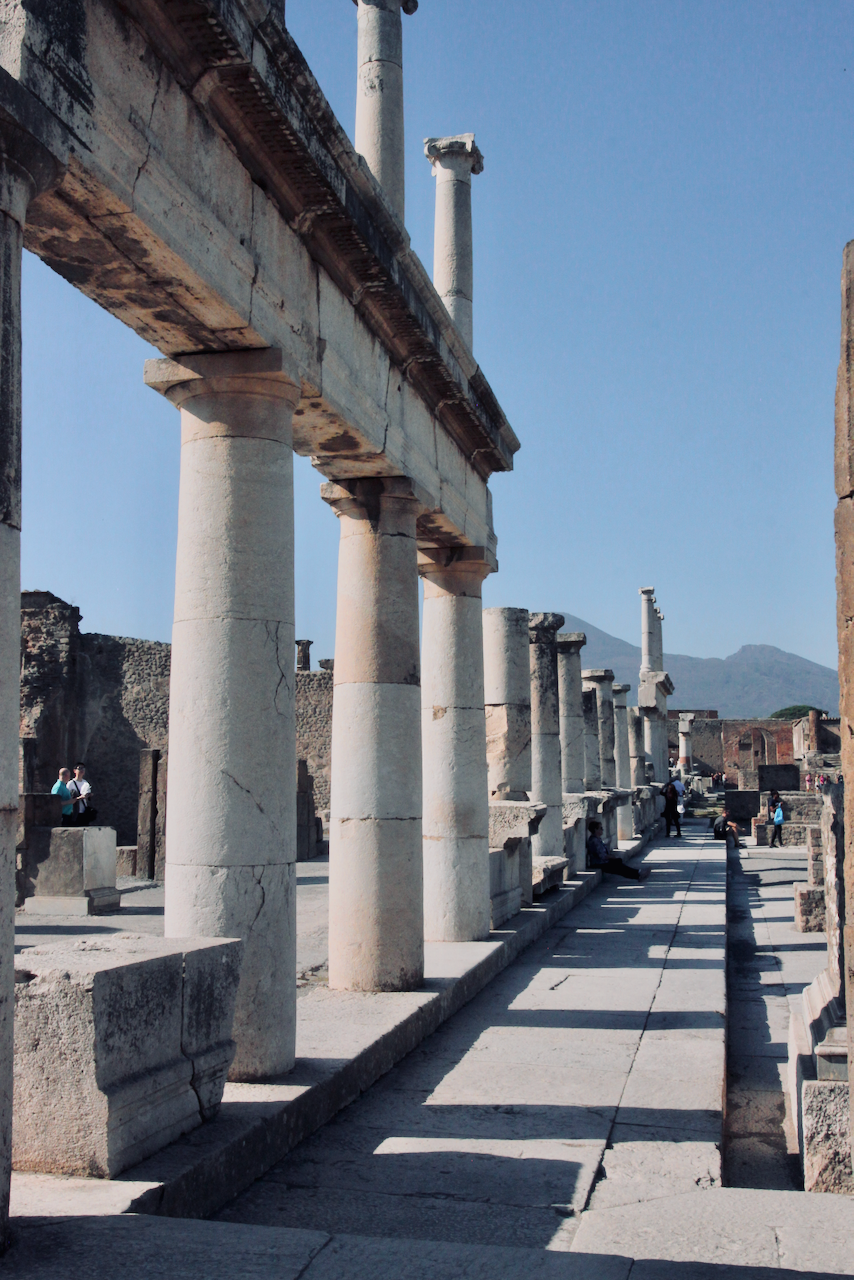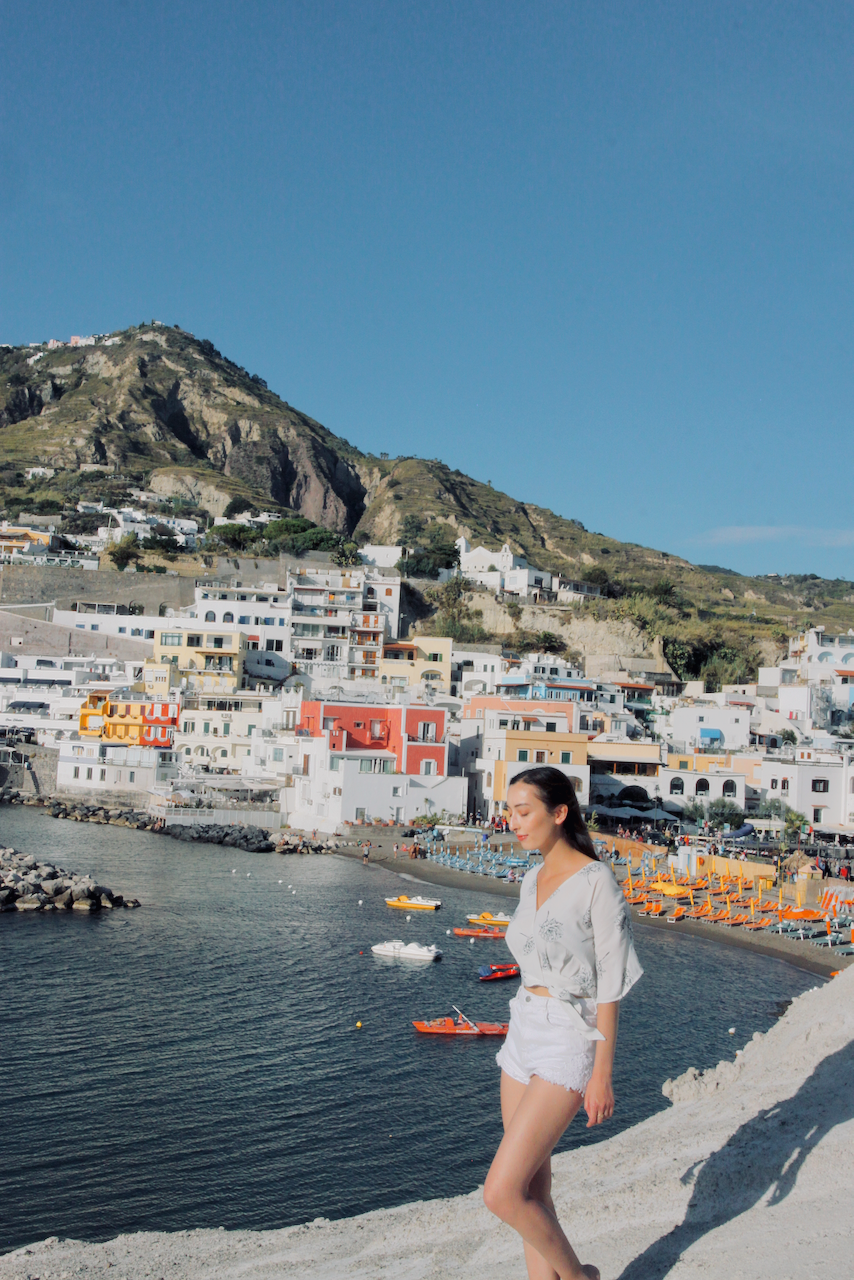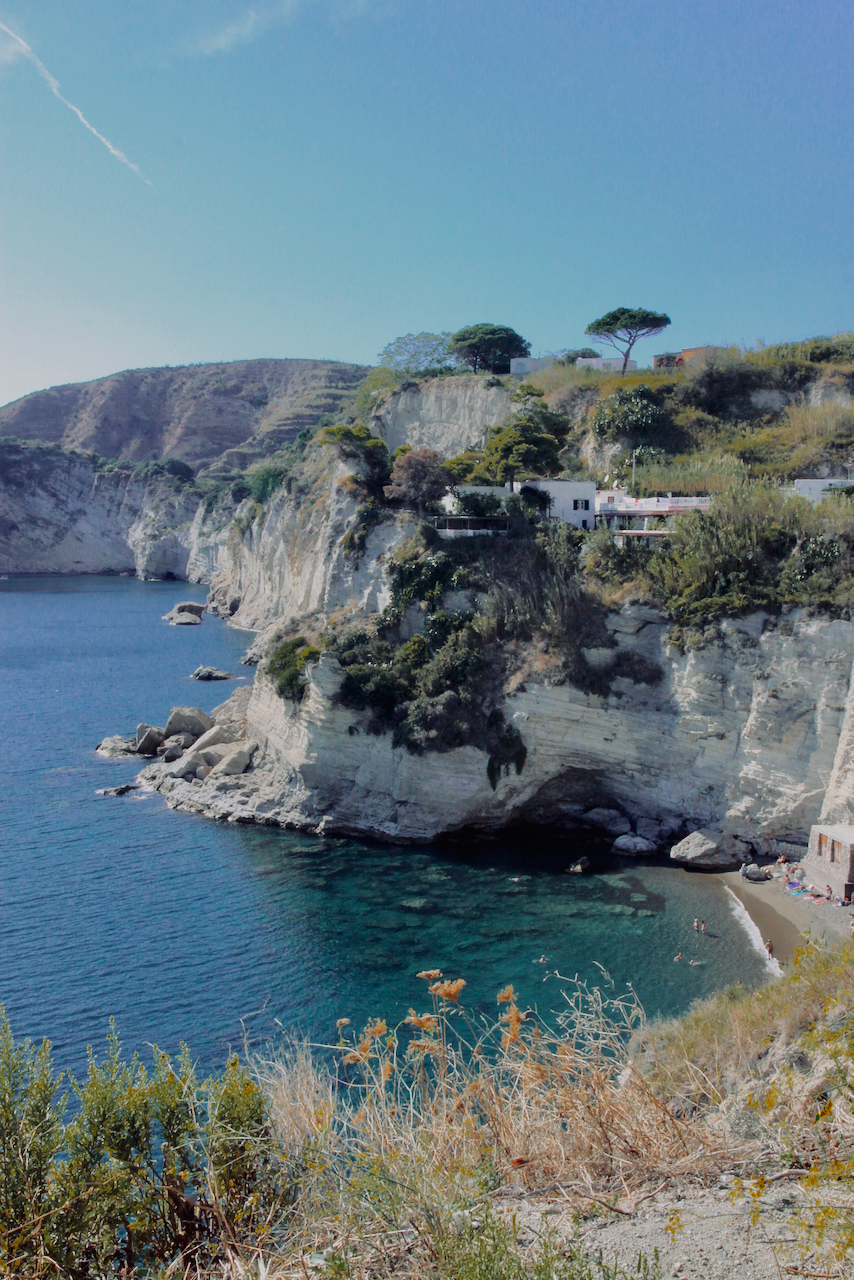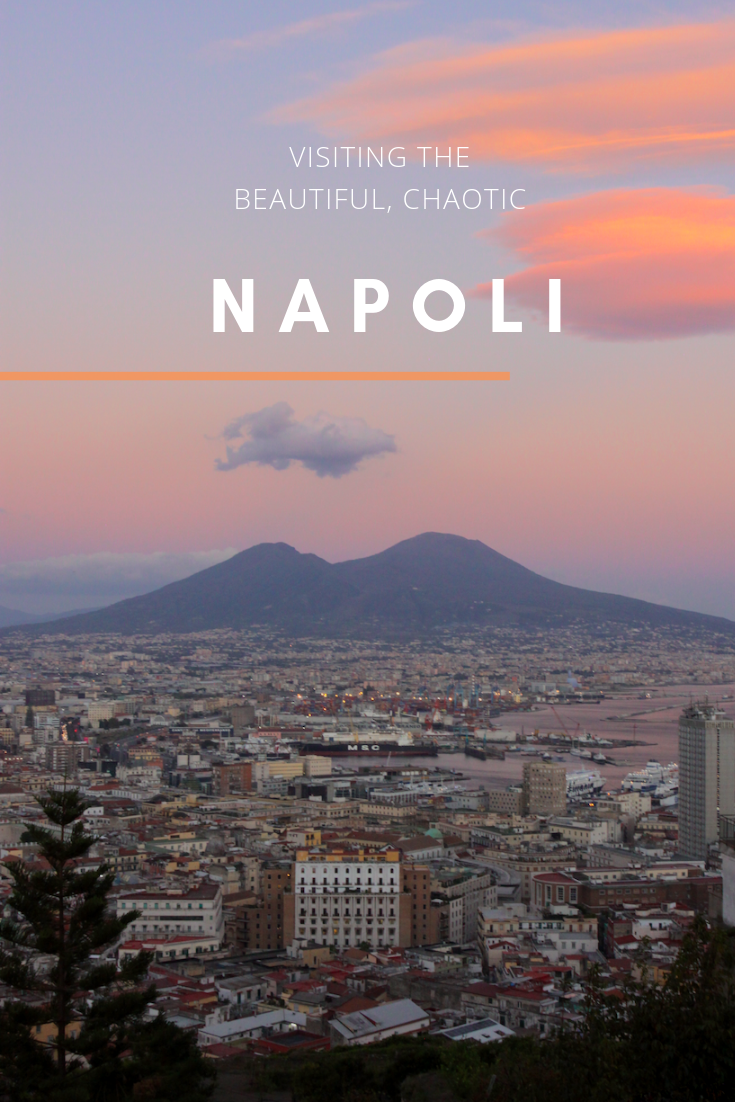Beautiful, chaotic Napoli: a guide to its historic centre
home / europe / back to Italy
“In what disorder we lived, how many fragments of ourselves were scattered, as if to live were to explode into splinters.”
Set against a dramatic Mount Vesuvius, Naples was a highlight of our time in Italy. The streets offer a vibrant experience, with lively markets and lines of laundry drawn across the alleyways. This guide is ideal for a short visit to the city, and includes information about where to stay and how to get around the bustling historic centre. We’ve included recommendations for the best Neapolitan pizza (think Eat Pray Love), breathtaking views of Mount Vesuvius, and day trips from the historic centre of town.
WHY VISIT NAPLES?
In some cities that we visited in Italy it was hard to get a proper sense of how the locals live. At the risk of being that traveller who complains about all other travellers, places like Venice and Positano are truly impacted by over-tourism. Visiting Naples was such a stark contrast. It can be just as bustling and crowded, but you can spend hours wandering suburban streets — swerving through traffic, alleyways and local markets — just observing the place for what it is.
route through Naple’s Historic Centre
Naples is a huge city, and it would be difficult to see everything in just a short stay. To quickly immerse yourself in its lively atmosphere, we’d recommend prioritising a few places around the historic centre of town:
Colourful stores along Via dei Tribunali
Experience the real Naples on Via dei Tribunali
We’d recommend starting your trip by visiting Via dei Tribunali (click to open maps), which will give you a real sense of the city. This was the main decumanus of the ancient Greek and then Roman city of Neapolis. It is now a lively street in the historic centre of town, filled with vendors, handmade crafts, and beautiful architecture. Pick up an aperol spritz for just 1.5 euros ($2.5 AUD) (it’s hard to miss the sellers yelling “aaaaperol spritz! Prego! Prego!” as they push carts down the street) and wander through colourful alleyways.
See Mount Vesuvius from Pedamentina a San Martino
If you continue to walk down Via dei Tribunali, you’ll eventually reach the Pedamentina a San Martino (click to open in maps). This is one of the oldest walkways in the city, where 414 steps connect the historic centre of town to the Certosa di San Martino, a lavish baroque monastry at the top of the hill.
From the top you’ll find spectacular, panoramic views of Naples and its surrounding hills. The monastry can also be visited through the museum, Certosa e Museo di San Martino, for 6 euros ($10 AUD). Its terrace and garden overlook the Bay of Naples to Vesuvius, and across the sea to the island of Capri. Further along this route is the Castel Sant’Elmo, a medieval fortress originating in the 13th century.
This district and viewpoint can also be reached by public transport on the Funicular Centrale, which travels from Augusteo to Petraio station.
Mount Vesuvius overlooking a beautiful, chaotic Naples. Shot on the way down from the Pedamentina a San Martino.
Secret to finding the most historic pizza in Naples
In 2017, UNESCO granted the art of Neapolitan pizza-making world heritage status. In the historic centre of Naples you’ll find L’Antica Pizzeria da Michele (click to open maps), which as opened in 1870 and remains one of the most famous pizzeria’s in the city. You may recognise it from a scene in Eat Pray Love, and at any time of the day there are extremely long queues leading into a packed restaurant.
Our tip? Disregard the wait times. Rather than queuing for a table, you can walk straight passed the crowd and easily take away a traditional marinara or Margherita for just 4-5 euros ($6.5-8 AUD). Pizzas are whipped up in front of you in 15 seconds flat, then cooked in a wood fire oven.
Other top pizzerias include:
Di Matteo — this pizzeria was opened in 1936 and can be found on the lively Via dei Tribunali.
How to get around Naples
Many of the main attractions in Naples are located in the historic centre itself. This area is full of busy roads and narrow alleyways, and is best explored on foot. Where needed, we’d generally recommend buses as the best public transport option, as they connect the historic centre to the rest of the city.
If you are planning to take day trips out of the city, the metro line may be useful. Line 1 of the metro connects the central station, the historic centre of town, and the Port of Naples. It may also be a good option to take the metro to if you want to visit the National Archaeological Museum, which is a short walk from Museo Station.
Maps and more information about public transport and in Naples can be found on the Unico Campania website here.
The best day trips from Naples
Naples is a great base to explore many beautiful and interesting places along the west coast of Italy. We’d highly recommend making time to visit the ancient ruins of Pompeii and Herculaneum, or the islands of Ischia, Procida, or Capri while you’re there.
Ancient ruins of Pompeii and Herculaneum
The Roman cities of Pompeii and Herculaneum were suspended in time during the catastrophic eruption of Mount Vesuvius in 79 AD. The ruins are some of the most important archaeological sites in the world, and attract just under 3 million visitors each year.
HOW TO GET THERE
The easiest way to reach Pompeii and Herculaneum is via the circumvesuviana, a local train which wraps around Mount Vesuvius. Trains leave Napoli Garibaldi station (click to open in maps) two to three times per hour, and the route takes just 40 minutes. To reach Herculaneum, get off at Ercolano Scarvi, or continue to Scarvi-villa Misteri to get to Pompeii.
HOW LONG TO SPEND THERE
A lot of blogs and guides recommend spending around 2 hours at each of these sites, however we spent the whole day. It is astounding that entire cities have been preserved, and they can take hours to fully explore.
ISLANDS IN THE BAY OF NAPLES
Procida, Capri and Ischia are spectacular islands located in the Bay of Naples. From the Port of Naples, ferries generally take around 90 minutes each. These islands are frequently visited as day trips from Naples, however we would highly recommend staying on the islands themselves if possible — our ferry to Capri was delayed by two hours, and the ferry back was cancelled entirely. Beyond the length of time that it takes to get there, there is also a lot to see around the islands themselves (we hardly scratched the surface in just one day on Capri, and wish we had more time there).
Is the historic centre of Naples safe for tourists?
When planning our visit to Naples, we were constantly warned about how dangerous it is, and heard about pickpocketing and robberies. While this is super unfortunate, it may be the luck of the draw in any major European city.
Granted, Naples is not as pristine as Florence and the council is clearly behind on rubbish collection. However, we never felt unsafe or bothered at all. We were never approached on the street, and frequently walked around late at night between the historic centre and Garibaldi station (which has a bit of a reputation). Definitely don’t be dissuaded from visiting, just exercise normal caution — Naples is Italy’s third largest city, and while it may seem a bit chaotic, it’s also full of people simply going about their day.
home / europe / back to Italy
Find us on Instagram



